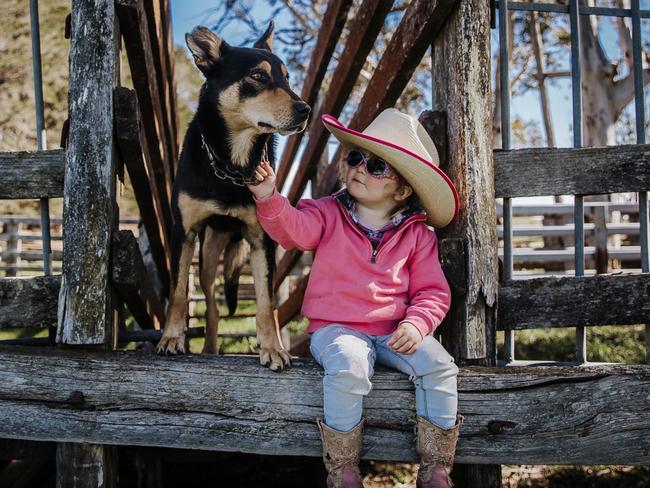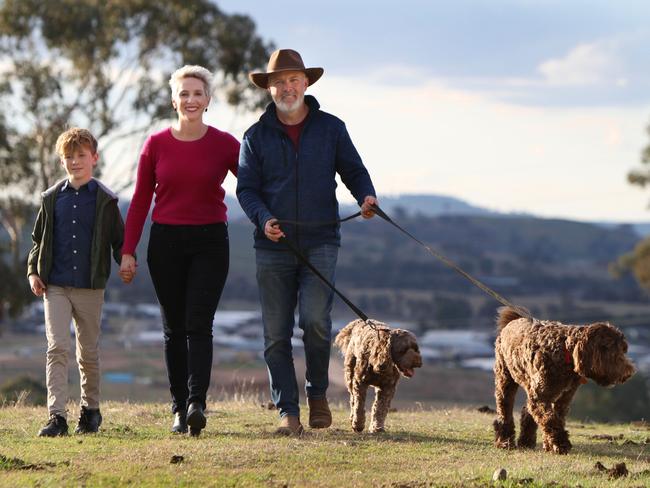Great Migration: What’s driving one in five Australians to plan regional move?
Sick of unaffordable homes and the exhausting rat race of city living, more than three million people living in capital cities are thinking about chasing their dream of moving to a regional or rural area. But there’s one thing holding them back.
Bush Summit
Don't miss out on the headlines from Bush Summit. Followed categories will be added to My News.
City slickers are planning to head to the bush in droves chasing a better lifestyle but a major lack of service delivery threatens to hamper the great migration.
Up to 20 per cent of Australians living in capital cities — about 3.4m Australians — would consider moving to a regional or rural area in the next two years, exclusive SEC Newgate research for the Bush Summit revealed.
Over 10 years, the number of people willing to head to the bush jumps to 32 per cent.
Brisbane, Melbourne, Adelaide and Sydney residents were most likely to move regional in the next two years, while Perth residents overtook Sydneysiders when it came to the likelihood of moving over a 10-year period.
Locals in Perth and Hobart were the least likely to opt for a move in the next two years but Adelaide replaced Perth in those least likely to move over the next decade.
The figures also show that the appetite for a tree-change has not died down despite the end of Covid with demand continuing to boom.
But with the growth in numbers, the already jarring service gap between regional and metropolitan Australia becomes even more stark — with an overwhelming 86 per cent of people wanting investment in adequate phone and internet coverage.

Another 84 per cent want more investment in incentives to encourage essential workers, like nurses and teachers, to head to the regions while 80 per cent wanted more transport infrastructure to make it easier to travel to cities.
Peak body Regional Capitals Australia executive officer Rachael Sweeney said a better lifestyle and housing affordability was driving the trends.
“Regional capitals have all the things you would find in a metro capital but on a smaller scale — the tertiary education opportunities, the arts and culture, the sporting facilities and higher end restaurants and cafes,” she said.
“While we know that rental opportunities are very difficult at the moment even in regional areas, the reality is you can still buy a house in a regional capital for much cheaper than the city.
“There has not been a tapering off in the demand for housing and the rental demand is really high. I don’t think it will change as you can work from home now.”
Ms Sweeney said it is impossible to argue against the growth of the regions and investment with the demand continuing after Covid.
“We are hoping, particularly at a federal level, that the planning gets a lot better. Really understanding the need for a strong pipeline for things like roads, airports and train lines,” she said.

“Access to services needs to really be considered. We would really like to see … a strong focus on regional visas continuing. There is a strong history of people coming to Australia living in Melbourne and Sydney.”
Gunnedah Mayor Jamie Chaffey said the migration boom was “exciting” but came with challenges.
“Rural, regional, and remote communities in NSW have been strongly sharing the opportunities that are here for so many years and it has not been easy particularly to encourage … individuals to come out into the regions,” he said.
“The big problem we’ve got is while we were so busy promoting opportunities we haven’t been supported well enough with the cost of infrastructure, especially homes, to cater to that.
“It is exciting but it does come with pretty significant challenges … having the workforce to ensure our (infrastructure) projects are productive is a challenge.”

Coalition transport and infrastructure spokesman Bridget McKenzie said a life in the regions can give people “a depth of character you can’t find anywhere else”.
“There are great career opportunities in the region, something that wasn’t always available. Globally focused high profile careers are now available right across the regions,” she said.
“Connecting regional capitals with capital cities works both ways, it allows new arrivals to connect to family and friends. It’s not just about having great roads, but also about having reliable rail and air services that are affordable not just for public servants … for people who want to go to the footy on the weekend, or bring kids home from uni.”
Ms McKenzie said adequate digital connectivity was also crucial for allowing regional businesses to thrive.
“It’s not just enough to build the tower 10 years ago, but to keep investing. (People) are not just using it for telehealth services and education, it is businesses … particularly women who take advantage. I don't want the Labor government taking a backward step in terms of connectivity.”
For lawyer Amanda Farmer, 40, and her brewer husband Scott O’Brien, 44, giving up a slick Bondi lifestyle for a fresh start in beautiful Mudgee was an easy decision.
The family made the move in mid-2021 and said the decision has been great for the whole family, including 10-year-old son, Callum.
Ms Farmer said their new lifestyle had allowed her husband to take up his dream of becoming a pilot while Callum has more open space to play and grow.
“I don’t feel like we’ve given anything up. The distance from the city was doable for us. I still have an office in Sydney and I’m back in Sydney once or twice a month so I feel I have the best of both worlds,” she said. “We ended up buying a house here, we’ve renovated, we’ve put a pool in the yard. We added an extra dog.
“We have lovely neighbours … (Callum) is best friends with a boy next door.”
Ms Farmer said the only shortcoming of the move was less access to health care.
“The access to medical services is a big deal,” she said. “That did shock me, that I’d call the local GP and I’d have to wait three weeks.”
Sydneysiders under the age of 50 are the most likely to consider a move to the regions, new research shows.
A quarter of Sydney residents aged 18 to 49 would consider a regional move in the next two years while just 9 per cent of those aged 50-plus would do the same.





